July 2019
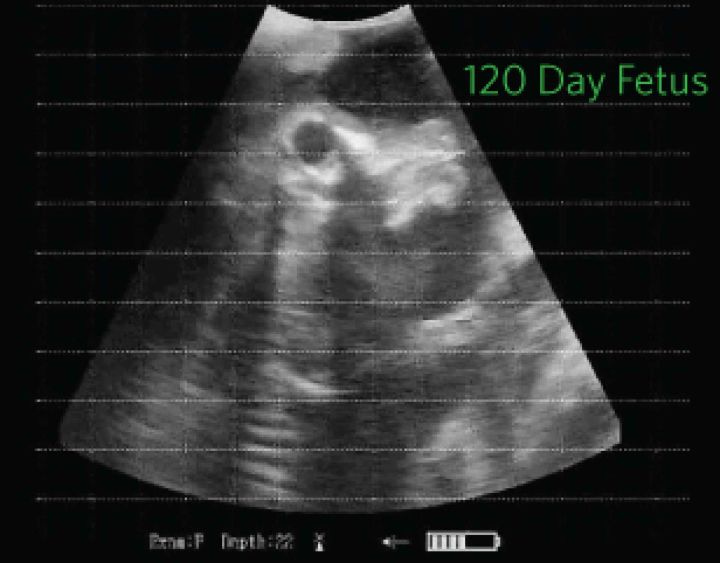
Tips, Tricks and Techniques – Fetal Aging: Plan Ahead for Success!
One of the greatest benefits of ultrasounding is the ability to age the fetus and determine the stage of gestation of the pregnant cow. When determining fetal age, it is important that the animals are presented at an estimated stage of gestation that gives you the results that you and your client desire. For example, if accurate fetal aging is required to confirm that pregnancies are the result of artificial insemination versus cleanup bulls, then the timing of the pregnancy testing is critical to one’s success. With some practice, one can categorize fetal age into 5 day increments using the grid lines on the ultrasound’s display for measuring. It is best to do this in the 28 to 85 day window. As you get closer to 100 days of gestation, there is too much variability due to genetics, fetal sex, nutrition, position of fetus in the uterus and other factors to ensure the same accuracy in fetal measurements and fetal aging.
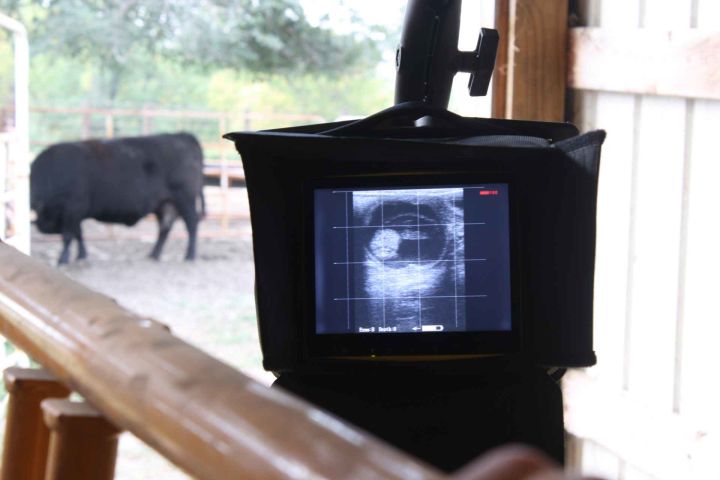
Tips, Tricks and Techniques - Adjusting Your Ultrasound Unit to Get the Best Image
ReproScan ultrasounds have easy to use operating systems. These units have been designed so the operator can quickly and easily adjust the settings to improve the image. For most of us, we are concerned with the cow’s uterus and its potential pregnancy.
So, let’s assume we have arrived at a ranch and the cows have been off water, causing their manure to be dry. Yesterday, we ultrasounded a set of cows with juicy manure in a nicely shaded shed and had an excellent image on the monitor! Today, there is no shed; the sun is shining; the wind is blowing; the manure is dry and the image is going to be difficult to see. Welcome to the cattle business!
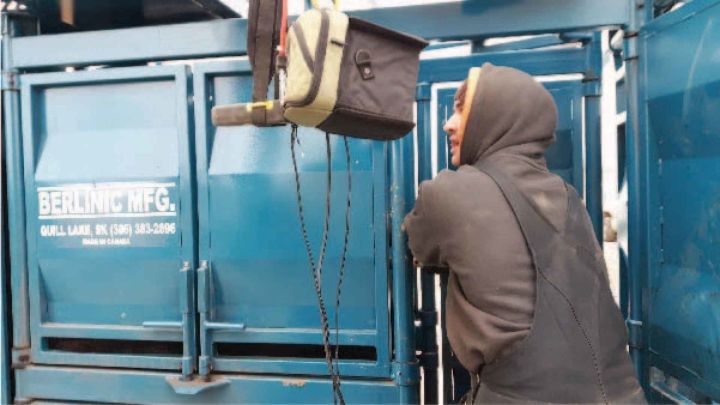
Tips, Tricks and Techniques – Ultrasounding Cattle when it is Cold
Ultrasound pregnancy testing cattle on cold days adds additional challenges to an already busy and challenging job. Below are a few tips and ideas from someone who has spent many a cold day chute-side. (Yes, you folks in Florida and other warmer climates can skip this article. Please send us your tips on how to beat the heat.)
How cold is cold? Most of us don’t mind a little frost on the ground during fall work. Some of my best days started standing on very solid ground. It’s the 5 degrees Fahrenheit (-15C) and colder that I consider cold, and there are special considerations to keep in mind while ultrasounding. How cold is too cold? Good question, I have been out at -13F (-25C) and everything went well. I wouldn’t recommend going to all your clients at this temperature, as too many things can go wrong in a poor setup even on a good day. Any colder than -13F (-25C), a little warmer if there is wind chill, and the LCD monitor will not function properly.
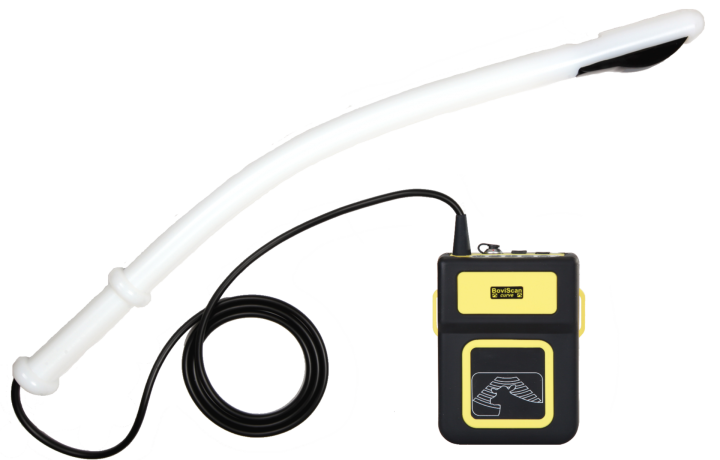
Tips, Tricks and Techniques – Getting the Right Pressure on the ReproArm

Equipment Care: Chuteside Set Up
Winter is right around the corner, this means chilly days. Chilly days mean chilly fingers. Speeding up your setup time at the chute can reduce the chilliness in your fingers. There are numerous ways to setup your ReproScan up chute-side, but what are quickest and easiest? ReproScan recommends the RAM Mounts® system. This accessory kit is easily adapted to any ReproScan Monitor. To see an in depth set up video click here to see the Ram Mounts Video on YouTube.
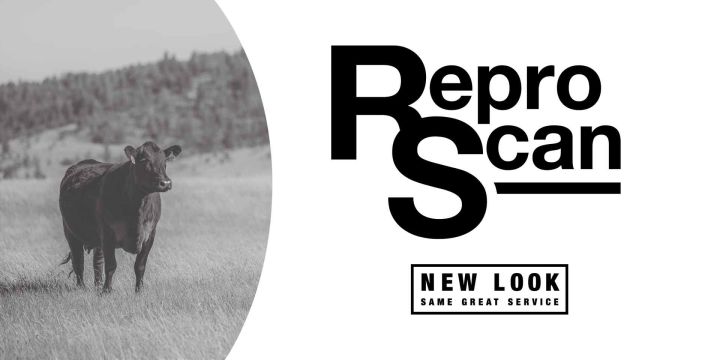
New Look!
As you may have already noticed, ReproScan is in the process of getting a new look! New look, new location, but same great customer service and products. At the core, ReproScan seeks to offer simple, durable, and affordable equipment with the best customer service. We at ReproScan wanted our look to reflect this. Stay tuned to see the transition, and thank you for your business—we greatly appreciate it!
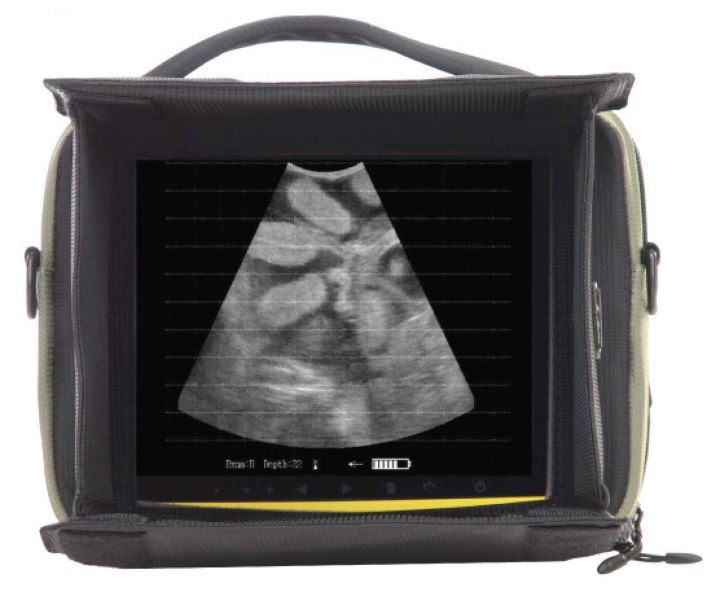
New Equipment Highlight - 2.0 Wireless Monitor
ReproScan’s new LCD Monitor 2.0 is now available! This monitor offers improved image quality, increased user friendliness, wireless capabilities, a single 8-hour built-in lithium ion battery, touchscreen buttons, and a brighter and clearer display. Paired with the ReproScan Sun Shade Monitor Bag, the bright 1000 nit display makes working outside in sunlight even easier. The LCD Monitor 2.0 is wireless when used with the ReproScan XTC increasing ease of setup and versatility; it also provides a much clearer image with any of the BoviScan machines via direct wired VGA input. It is IP65 rated for weatherproofing making it even more durable.
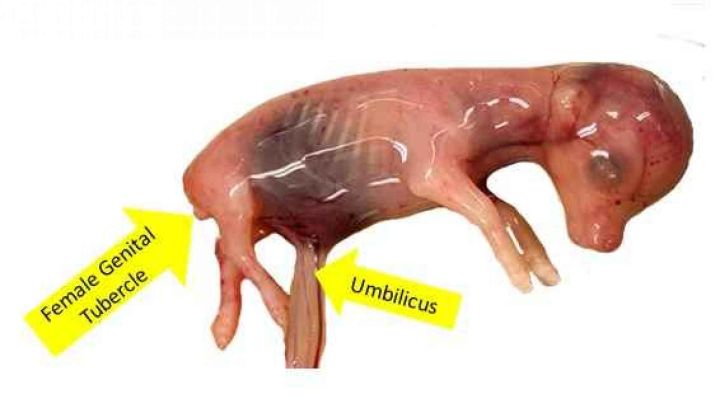
Tips, Tricks and Techniques – Fetal Sex Determination
Fetal gender determination can be a large value-added feature for those utilizing ultrasound technology. To accurately determine the gender of the fetus, most experts do not recommend attempting to fetal sex earlier than day 57. The optimal window when using a linear probe ultrasound such as the BoviScan HD, is between day 57 and 80 days. When using a convex rectal probe ultrasound (ReproScan XTC and BoviScan Curve), Dr. Andrew Bronson recommends waiting until day 70 to begin fetal sexing. The upper limit for age of fetus when using the convex rectal probe is determined by size of cow and other factors. Fetal gender has been successfully determined in cattle up to 120 days pregnant if the cows are small and conditions are right. Therefore, the window of opportunity for gathering gender data varies depending upon the ultrasound probe type, size of cows, consistency of manure, facilities and sunlight. If conditions are favorable, fetal gender can be determined much easier than in challenging conditions. If you are new to fetal gender determination, practice on cows that are 60 to 75 days with a linear probe unit or 75 to 90 days pregnant with a convex rectal probe unit.
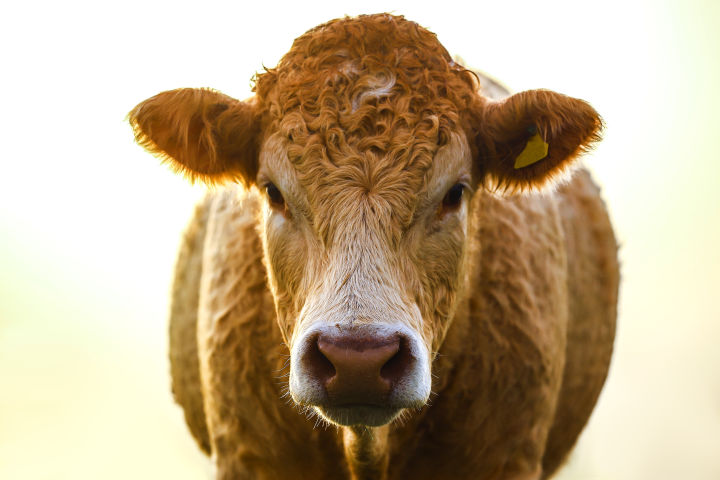
Reproductive Ultrasound for Feedlots
Here are some key points to consider:
- A significant number of feeder heifers may be pregnant on arrival at the feedlot.
- Pregnancy status is a very significant factor in the performance and welfare of heifers in the feedlot.
- Feedlot staff under the direction of a veterinarian can quickly learn to pregnancy test feeder heifers.
- The stage of pregnancy can be detected and pregnant heifer management protocols can be implemented using this information.
- The VGA output of the ReproScan XTC and BoviScan Curve allow the image to be easily and clearly displayed on a large flat screen monitor. ReproScan can provide a 19” / 50 cm 5:4 LED monitor for your feedlot.
- The use of the ReproArm along with the ReproScan XTC or BoviScan Curve allows feedlot personnel to pregnancy test feeder heifers without putting their arms into the heifers. This is a very significant safetly factor.
- It is very cost effective to pregnancy test feeder heifers on arrival in the feedlot using ReproScan Veterinary Ultrasound equipment.
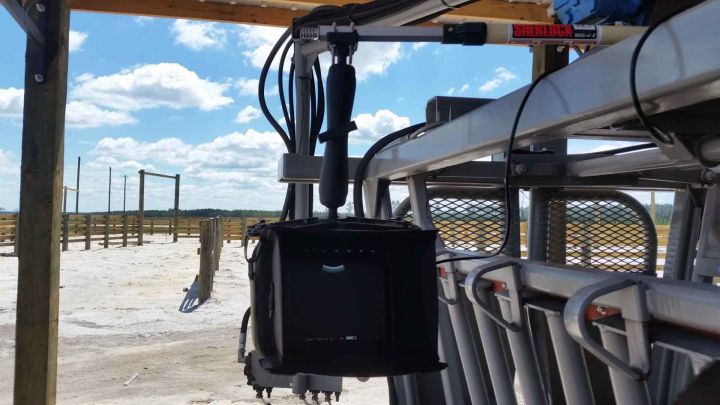
New RAM Mount® for your ReproScan Monitor
There are numerous ways to position your Bright LCD Monitor chute-side. ReproScan is now offering a new RAM Mount Kit for your Bright LCD Monitor. This kit allows you to quickly set the perfect angle and fix the position of the monitor. The RAM Mount keeps your monitor steady even in the wind, allowing you to make your diagnosis quicker.
It is simple to attach the RAM Mount Kit to your existing monitor bag. With two adjustable joints connecting the LCD Monitor to your choice of chute-side adapters, it is quite versatile and easy to set up. Depending on the chute you are working with, there are a couple different ways to fasten the Bright LCD Monitor to the chute allowing the Ram Mount Kit to be used at any chute. Call ReproScan today to discuss the RAM Mount Kit.